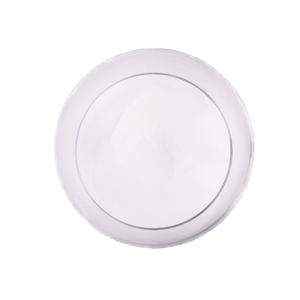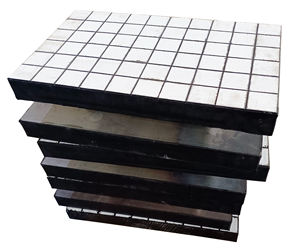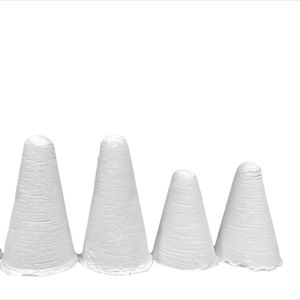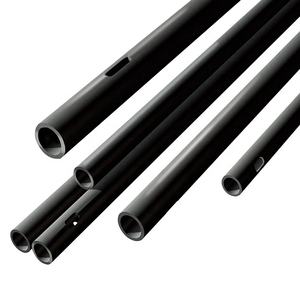Professional industry ceramic supplier, silicon nitride, silicon carbide, aluminum nitride and any other kinds of ceramics.
PRODUCT PARAMETERS
Description
Overview of Refractory Cement Low Cement Refractory Castable High Alumina Castables Refractory Material
Refractory Cement Low Cement Refractory Castable High Alumina Castables Refractory Material are non-metallic substances designed to withstand extreme temperatures exceeding 1,000°C, along with harsh chemical and physical stresses. They are essential for the inner linings of industrial furnaces, kilns, reactors, and incinerators, providing critical thermal insulation and structural integrity in processes ranging from metal and glass manufacturing to power generation.
Features of Refractory Cement Low Cement Refractory Castable High Alumina Castables Refractory Material
-
High-Temperature Resistance: Maintain structural strength and stability at temperatures often exceeding 1500°C.
-
Excellent Thermal Shock Resistance: Withstand rapid heating and cooling cycles without cracking or spalling.
-
Chemical Inertness: Resist corrosion and degradation from slags, molten metals, and acidic or basic environments.
-
High Mechanical Strength: Possess considerable load-bearing capacity at operating temperatures.
-
Low Thermal Conductivity: Provide effective insulation to improve energy efficiency and protect furnace structures.
-
Abrasion Resistance: Withstand erosion from solid materials and gas flows.
Specification of Refractory Cement Low Cement Refractory Castable High Alumina Castables Refractory Material
Low cement refractory castables and high alumina castables handle extreme heat well. They resist temperatures far above regular concrete. These materials are vital for tough industrial jobs. Refractory cement binds them together. The “low cement” part means less cement is used. This change brings big benefits. Less cement means less water is needed for mixing. Less water creates a denser final structure. A denser structure is stronger. It resists wear better. It lasts longer under stress. It handles chemical attacks better too. This makes low cement castables superior for many demanding uses.
High alumina castables contain a lot of alumina. Alumina boosts their heat resistance significantly. They can handle very high temperatures reliably. Their high alumina content also makes them strong against chemical erosion. Slag and harsh gases damage them less. This strength is crucial in harsh environments like metal furnaces or kilns.
These castables are versatile. They form furnace linings, boiler walls, and incinerator linings. They patch damaged refractory areas effectively. They build custom shapes easily. Installation is straightforward. Workers mix the dry material with water onsite. They pour or pump it into place. It sets and hardens. Then controlled heating drives out moisture. This final step activates their full strength. Proper curing is essential for best performance.
These materials offer a strong solution. They provide excellent heat protection. They last a long time even with heavy use. They resist chemical damage effectively. They are adaptable for complex installations. They are a smart choice for intense heat applications.
Applications of Refractory Cement Low Cement Refractory Castable High Alumina Castables Refractory Material
Refractory cement is heat-resistant concrete. It handles extreme temperatures in industry. Low cement refractory castable is a key type. It uses less water for mixing. This makes it stronger and more durable after setting. It resists wear and tear very well. Factories use it to line furnaces and ovens. It lasts longer under heavy loads and high heat. This saves money on repairs.
High alumina castables are another important type. They contain a lot of aluminum oxide. This gives them excellent strength at high temperatures. They also resist chemical attack from slag and hot gases. These castables are perfect for lining cement kilns and lime kilns. The intense heat and chemical reactions there demand tough materials. High alumina castables meet this need reliably.
Refractory materials in general protect equipment. They form linings inside things that get extremely hot. Think steel ladles in foundries. Think boilers generating power. Think waste incinerators burning trash. Without these materials, the metal shells would melt or warp quickly. Refractory cement acts like a shield. It keeps the heat inside the process. It protects the outer structure from damage. Different types are chosen for specific jobs. Factors include the maximum temperature, the chemicals present, and physical wear expected. Low cement and high alumina castables are popular choices. They offer good performance for many tough applications. Workers install them by casting or gunning them into place. This makes complex shapes possible. It speeds up installation compared to bricks. Maintenance becomes easier too.
Company Profile
Tanki New Materials Co.Ltd. focus on the research and development, production and sales of ceramic products, serving the electronics, ceramics, chemical and other industries. Since its establishment in 2015, the company has been committed to providing customers with the best products and services, and has become a leader in the industry through continuous technological innovation and strict quality management.
Our products includes but not limited to Aerogel, Aluminum Nitride, Aluminum Oxide, Boron Carbide, Boron Nitride, Ceramic Crucible, Ceramic Fiber, Quartz Product, Refractory Material, Silicon Carbide, Silicon Nitride, ect. please feel free to contact us.

Payment Methods
T/T, Western Union, Paypal, Credit Card etc.
Shipment Methods
By air, by sea, by express, as customers request.
5 FAQs of Refractory Cement Low Cement Refractory Castable High Alumina Castables Refractory Material
What is low cement refractory castable?
It is a special cement mix. It contains less cement than regular types. This mix uses high alumina materials. It gives better strength under heat.
Why use low cement in castables?
Less cement improves performance. High cement causes more water use. Too much water weakens the material. Low cement means less water. This makes the castable denser and stronger. It handles heat and wear much better.
How hot can high alumina castables get?
They handle very high temperatures. Most types resist 1500°C to 1800°C. The exact limit depends on the alumina level. Higher alumina means better heat resistance.
Does it set quickly?
It sets at a normal pace. It gives enough time for pouring and shaping. Setting time depends on the mix and temperature. Follow the maker’s instructions for water and curing. Proper curing is key for strength.
How thick can I apply it?
Apply it based on the job needs. Thin layers work for coatings. Thicker sections need support. Use anchors or forms for thick placements. Always check the product specs for maximum thickness advice.
REQUEST A QUOTE
RELATED PRODUCTS

High Alumina Refractory High Strength High Alumina Castables High Quality High Alumina Refractory Castable

OEM Refractory Industrial High Temperature Resistance 99% Al2O3 Rod Cylinder Alumina Ceramic Tube

Long-Service-Life Thermal Shock Resistant Cordierite Ceramic Parts For Industrial Refractory Applications

Supply Insulation Cotton Refractory Materials Refractory Ceramic Fiber Module

Fire Resistant Thermal Insulation Ceramic Fiber Paper Refractory Material


